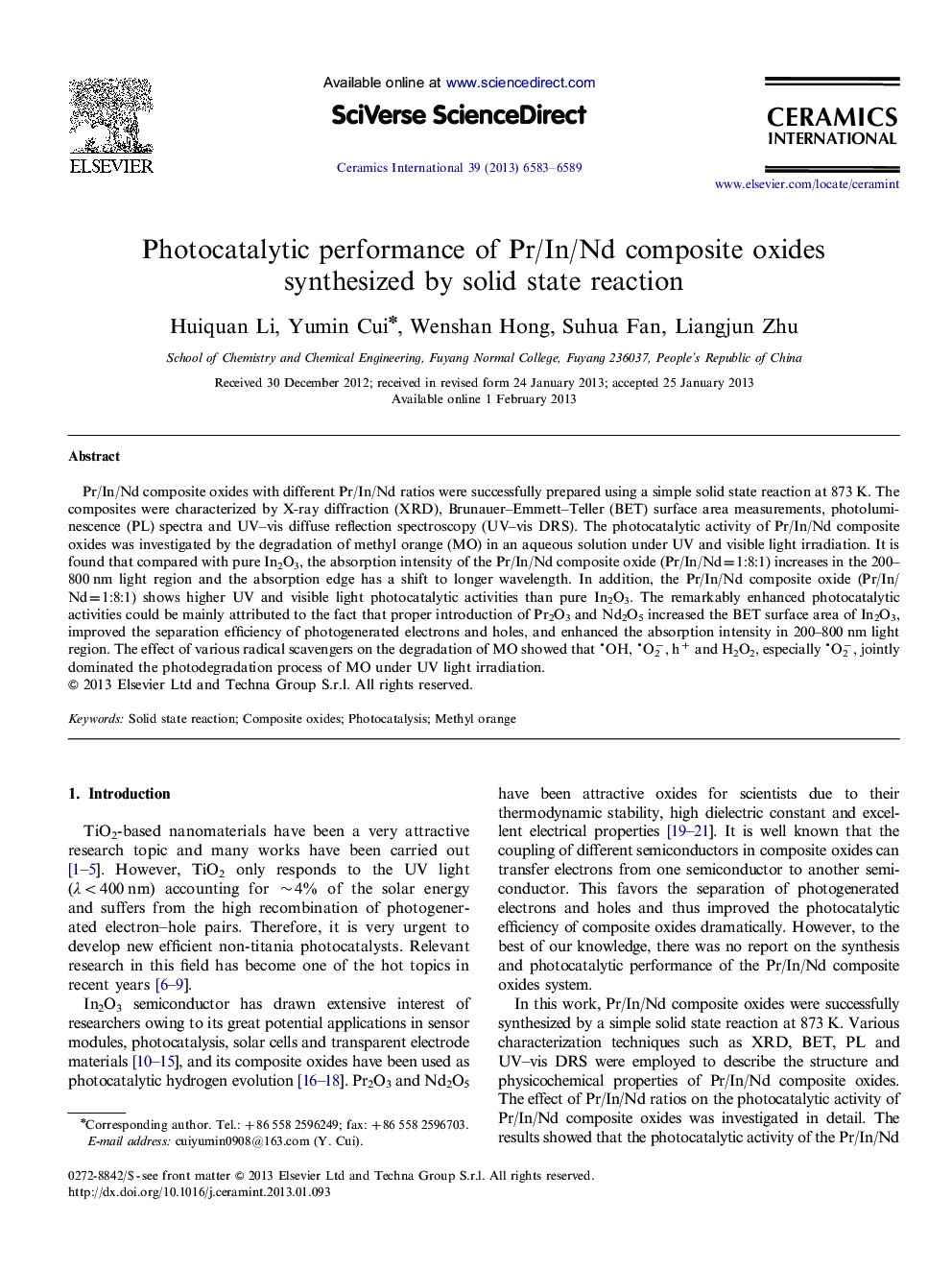| Article ID | Journal | Published Year | Pages | File Type |
|---|---|---|---|---|
| 1462789 | Ceramics International | 2013 | 7 Pages |
Pr/In/Nd composite oxides with different Pr/In/Nd ratios were successfully prepared using a simple solid state reaction at 873 K. The composites were characterized by X-ray diffraction (XRD), Brunauer–Emmett–Teller (BET) surface area measurements, photoluminescence (PL) spectra and UV–vis diffuse reflection spectroscopy (UV–vis DRS). The photocatalytic activity of Pr/In/Nd composite oxides was investigated by the degradation of methyl orange (MO) in an aqueous solution under UV and visible light irradiation. It is found that compared with pure In2O3, the absorption intensity of the Pr/In/Nd composite oxide (Pr/In/Nd=1:8:1) increases in the 200–800 nm light region and the absorption edge has a shift to longer wavelength. In addition, the Pr/In/Nd composite oxide (Pr/In/Nd=1:8:1) shows higher UV and visible light photocatalytic activities than pure In2O3. The remarkably enhanced photocatalytic activities could be mainly attributed to the fact that proper introduction of Pr2O3 and Nd2O5 increased the BET surface area of In2O3, improved the separation efficiency of photogenerated electrons and holes, and enhanced the absorption intensity in 200–800 nm light region. The effect of various radical scavengers on the degradation of MO showed that OH, O2−, h+ and H2O2, especially O2−, jointly dominated the photodegradation process of MO under UV light irradiation.
